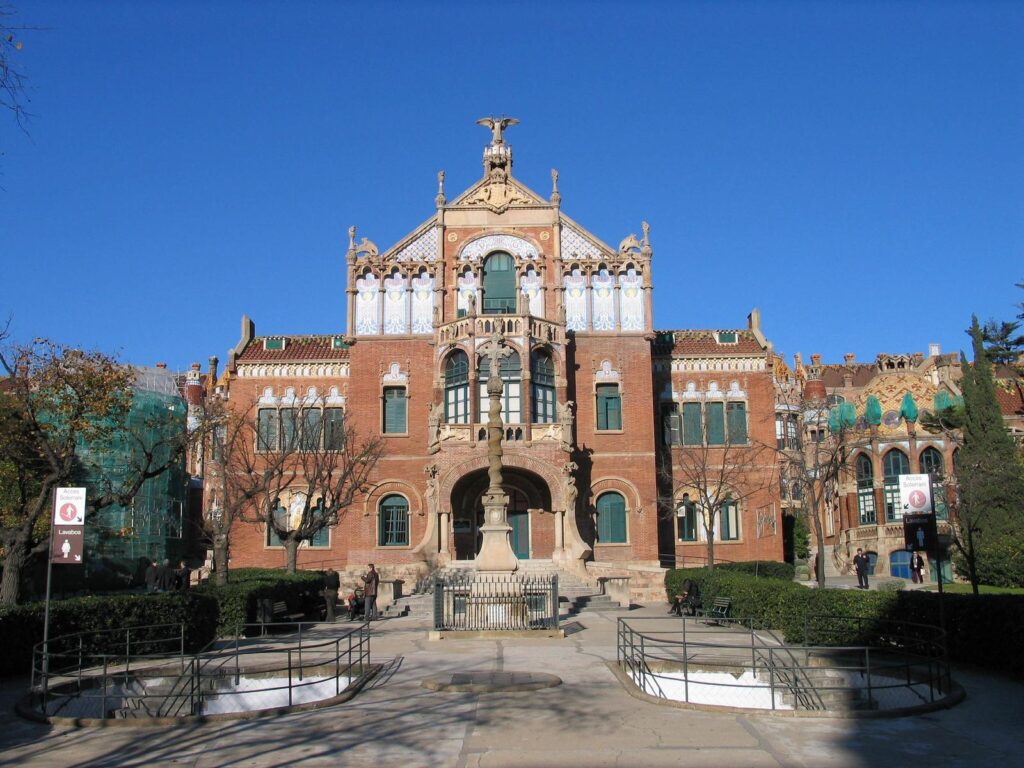Modernism was an international movement which originated in Europe in the late 19th century. Its foundations, essentially aesthetic, have their common link in the renewal of the arts and the constant inspiration from nature, from which they took their most distinctive symbols. In response to the second Industrial Revolution, the fin de siècle culture wanted to welcome the new century with a fresh start. This technological renewal brought important changes which influenced both social and daily life, and helped strengthen the power and influence of the new bourgeoisie.
In European region, Modernism evolved with a marked difference in each country, because of the popular and cultural influences specific to each terrain. It is significant that in each country the movement took on a different form and personality, despite certain unifying stylistic features. France, Belgium, England, and Austria in particular, developed significant aesthetic trends whose common ground was a renewal of art-oriented elements of nature and a referral to cultures and civilisations with a strong exotic influence.
In Catalonia the movement was not only based on aesthetics, but extended to all areas, being one of the regions with the strongest political and intellectual influences attached to Modernism. Its origins usually date to the 1888 Barcelona Universal Exposition, a date where the emergence of this new style became official, even though some Modernist expressions had appeared years before. This was the era of the cultural movement of the Renaissance, of finding a true Catalan identity.
Modernisme sought modernity on the one hand and cultural regeneration on the other. A group of intellectuals whose core was the editorial staff of the weekly magazine L’Avens gave the movement content. They did not merely promote architecture, the cornerstone of Modernisme, but also the sculpture, painting, graphic arts, literature, theatre and the recovery of the traditional craft trades which were so skilfully used by the great architects.
Alexandre Cirici Pellicer, a highly proficient historian and art critic, set the beginning of Modernisme in Catalonia in the period 1880-85, when five buildings as different as Casa Vicens, by Antoni Gaudí; the Víctor Balaguer museum-library in Vilanova i la Geltrú, by Jeroni Granell i Mundet the Academy of Sciences in the Rambla of Barcelona, by Josep Domènech i Estapà; the no longer existing Indústries d’Art de Francesc Vidal by Josep
Vilaseca, and the Montaner i Simón publishing firm —today Fundació Tàpies—by Lluís Domènech i Montaner
This new artistic expression provided an enormous variety of symbols, in addition to proposing greater creative freedom through new ways previously not accepted by academic institutions. Within the art world itself, this change resulted in a major revitalisation of craftsmanship, elevating the minor art forms to the category of art and also developing the field of design. The new city-shapes, their inhabitants, environment and everyday objects underwent both an aesthetic and formal transformation which enabled everyday citizens access to the worlds of art and beauty.

There are two prominent names of the modernist moviment:
- Born in Barcelona, Lluís Domènech i Montaner had shown his passion for architecture. From his position as a Professor and Director of the Escola d’Arquitectura de Barcelona (Barcelona School of Architecture), he exerted a major influence in the development and expansion of Modernisme (Art Nouveau). His buildings reveal a mixture between rationalism and the fabulous ornamentation inspired in the Hispano-Arabic architecture and the curvilinear motifs typical of Art Nouveau.In the Restaurant of the Park de la Ciutadella of Barcelona (1888) (at present Museum of Zoology), he applied very advanced solutions (iron structure and ceramics) developing them later in the Palau de la Música Catalana (1908) – whic has a fantastic coverage of mosaic, ceramics and polychrome glass, as well as in other buildings erected after this time. These features are also present in his greatest architectural ensembles: The Hospital de Sant Pau in Barcelona and the Institut Pere Mata in Reus. An interesting characteristic of Domèanech i Montaner’s work is the evolution towards lightness that is evident in the Palau de la Música Catalana and wich is the very opposite to the weighted structures of Gaudí (see La Pedrera).
- Puig i Cadafalch was a politician who became president of the Mancomunitat de Catalunya (the Commonwealth of Catalonia which covered the four Catalan provincial administrations) from 1917 to 1925. He was also an archaeologist and expert in Romanesque art, who was instrumental in excavating the ruins at Empúries, as well as the director of the Institut d’Estudis Catalans. And, of course, he was one of the most prolific architects and town planners in the first half of the 20th century. He was born in the town of Mataró and became one of the key figures in shaping the Catalan nationalist movement. He was the architect behind such modernista landmarks as the Casa Amatller, the Casa Martí (Els Quatre Gats), the Casa Terrades (Casa de les Punxes) and the Casa Macaya. They all bear the imprint of someone who always drew inspiration from the traditional forms of Catalan mansions, the Gothic style and the influence of northern European trends, which used new materials such as exposed brick, tiles and wrought iron to imbue buildings with a medieval feel.
You can get more information and details about this modernist movement in the Cultural Heritage, through this link to very emblematic modernist buildings:
- Palau Güell
- Palau de la Música Catalana
- MNAC
- CaixaForum, Fàbrica Casaramona
- Casa Lleó Morera
- Casa Amatller
- Casa Batlló
- Editorial Montaner i Simó, Fundació Antoni Tàpies
- Casa Milà, la Pedrera
- Hospital de la Santa Creu i Sant Pau
- Park Güell
- Torre Bellesguard
For more information on Cultural Heritage, click on the following link:
PATRIMONI CULTURAL / CULTURAL HERITAGE
You can enjoy, in comfort, all the cultural, touristic and architectural offer of Barcelona and Catalonia through a luxury transport of our company Esteve Business Cars.


